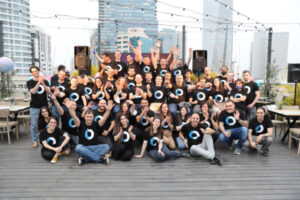In the IT industry, where the very project has a different demand for very specific competencies that often take years to develop, outsourcing has become a popular way to patch up the team. The domination of project-based cooperations makes this model the most beneficial, as opposed to hiring full-time employees or working with freelancers. It provides the companies with incomparable flexibility and allows them to skip time-consuming recruitment. The money factor is not without importance, too – staff-related expenses shrink in the outsourcing model.
Not everyone knows that there are various ways in which companies can outsource particular competencies. Each of them has slightly different characteristics. And even though the differences between them are slight, they may have a strong impact on the quality of the work and its results. Let’s take a look at the popular IT outsourcing models and their specifics so that you can understand which one fits your project and approach the most.
Body leasing (staff leasing)
In the case of this model, the rules are simple. Anytime the company has a demand for specific competencies, the body leasing service provider picks some professionals with matching expertise who are fully available for the specified timeframe. It’s a fast and effective way to fill the gaps in the team. When the clock is ticking and any minute counts, there is no better way to keep the work running. That is why body leasing is a favorite model of the companies that operate on tight deadlines.
In the case of body leasing, the service provider covers only the demand for the competencies without backing up the customer’s team in the implementation process and other project-related issues. That is not the case with team extension, our next IT outsourcing model to cover.
Team extension
You may already have come across a synonymical use of team extension and body leasing. However, these are not the same models. They are very similar, but there is one major difference between the two. Team extension (also called IT staff augmentation) is much more than just covering the lacking competencies. In this model, the company that provides IT professionals get to know the project deeply in order to understand its goals and specifics. Rather than just relying on the competence guidelines, they try to find a match that will fit the team in every way – in terms of work pace, problem-solving style, familiarity with project methodologies, etc. Plus, the
Many companies consider team extension a more complimentary model that allows the companies to make the most out of external cooperation. It definitely provides the external professional with a smoother landing in the new team and helps them quickly align with the company’s work approach. As a result, any clashes and misunderstandings are less likely. Also, it’s easier to build up mutual trust among the team members in such a model. The professionals that support the company in a team extension model become its integral part for a while. Due to that, they are not considered outsiders.
If you would like to dive deeper into the topic of the difference between team leasing and team extension, check Inwedo’s articles on this topic that capture it very well based on the company’s experience.
Agile teams on demand
The third IT outsourcing model we would like to cover is very distinctive from the previous two, as it doesn’t combine the client’s team with the external professionals. Instead, the customer gets a dedicated software development team at their disposal. Its members are selected by the IT outsourcing company, based on the provided requirements. The cooperation with the dedicated team starts by defining the goals and project scope.
Aside from the professionals such as developers, testers, designers, etc., the teams also consist of a Product Owner and a Scrum Master (if it’s Scrum). Throughout the cooperation, they maintain their cross-functional and scalable character, as well as maximum independence. Whereas in the other models, the level of supervision and engagement on the client’s side may be higher, for Agile teams, it remains minimal. They can do great on their own, delivering the expected results in time.
We hope that our article helped you understand the subtle differences between these IT outsourcing models. As you can see, each addresses slightly different needs – make sure you pick one that fits yours!










